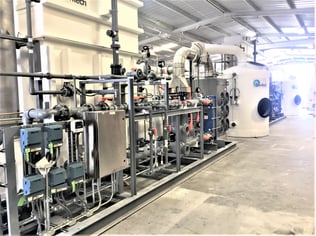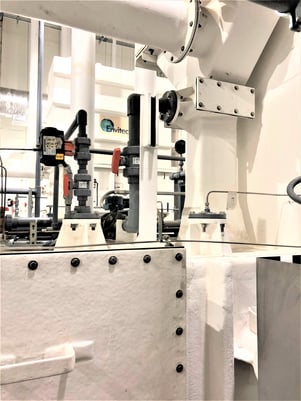 There are several different waste incinerator source categories controlled by EPA standards under the Clean Air Act (CAA). These include hazardous waste combustors (HWC), sewage sludge incinerators (SSI), municipal solid waste (MSW) incinerators, commercial and industrial solid waste (CISWI) incinerators, and Hospital, Medical, and Infectious Waste Incinerators (HMIWI). Each incinerator type has its own Maximum Achievable Control Technology (MACT) standard which establishes technology based limits for emitted HAPs. MACT standards are part of the National Emission Standards for
There are several different waste incinerator source categories controlled by EPA standards under the Clean Air Act (CAA). These include hazardous waste combustors (HWC), sewage sludge incinerators (SSI), municipal solid waste (MSW) incinerators, commercial and industrial solid waste (CISWI) incinerators, and Hospital, Medical, and Infectious Waste Incinerators (HMIWI). Each incinerator type has its own Maximum Achievable Control Technology (MACT) standard which establishes technology based limits for emitted HAPs. MACT standards are part of the National Emission Standards for

Hazardous Air Pollutants (NESHAP) and are applied to source categories that pose adverse risk to human health by the emission of hazardous air pollutants (HAPs). The HMIWI MACT standard for medical waste incinerators is the most challenging of the incinerator source categories. This standard controls particulate (PM), hydrogen chloride (HCl), sulfur dioxide (SO2), lead (Pb), cadmium (Cd), mercury (Hg), dioxins/furans (D/F), nitrous oxide (NOx), and carbon monoxide (CO). Emission limits depend on the incinerator size and weather it is a new or existing source. Small incinerators are less than 200 lb/hr of waste throughput, medium incinerators are between 200 lb/hr and 500 lb/hr, and large incinerators are greater than 500 lb/hr.
Envitech recently completed a project for two medical waste incinerators at a Midwest research facility. These are the first new medical waste incinerators installed in the United States since Envitech installed a 525 lb/hr medical waste incinerator at a research facility in Galveston, TX in 2013.
The scope of supply includes two medical waste incinerator scrubbers and a water treatment system to treat the blowdown from both incinerators. The incinerators are permitted as new, medium size incinerators. Ozone injection is integrated into the system to meet a NOx limit of 67 ppmv. The systems include pre-assembled pumps, piping, valves, and fittings to minimize installation time and cost. The pre-assembly provides long term rigidity, consolidation of space, longer up-time, and improved safety for operators. A description of the process arrangement can be found in this link to an earlier blog post.
Stack testing was performed in June 2021 for both incinerators. Test results confirm the Envitech system reduced emissions well below MACT standard limits, providing a comfortable margin for compliance over the range of operating conditions and waste feed. Below is a summary of stack test performance.
| Parameter | Emission Limit | Result, %Limit |
| PM | < 0.0095 gr/dscf | 17.9 |
| Pb | < 0.018 mg/dscfm | 8.9 |
| Cd | < 0.0098 mg/dscfm | 4.6 |
| Hg | < 0.0035 mg/dscfm | 25.7 |
| D/F | < 0.014 ng/dscm TEQ | < 1 |
| HCl | < 7.7 ppmv dry | < 1 |
| SO2 | < 1.4 ppmv | < 1 |
| NOx | < 67 ppmv dry | 24 |
Click on the link below to download literature on medical waste incinerator scrubbers.


